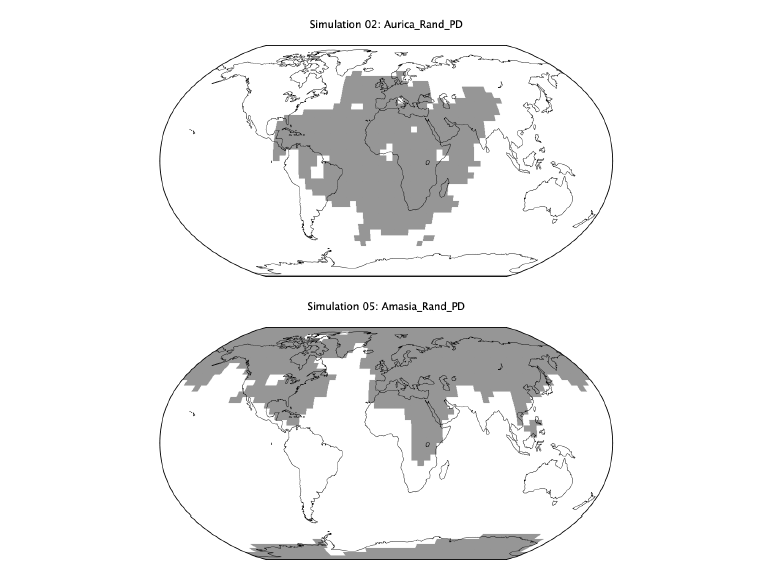A mere 200 million years ago, the supercontinent of Pangea split apart and created the continents we see on Earth today, separated by vast oceans. It’s easy to think these mighty landmasses are here to stay, but it’s likely that another supercontinent will grace our planet in the future.
It’s very hard to predict what this supercontinent might look like, but scientists suspect that all the continents except Antarctica could join together around the north pole around 200 million years from now, forming the new supercontinent “Amasia“.
Alternatively, all the continents might come together around the equator in about 250 million years, a theoretical supercontinent called “Aurica”.
Depending on which of these scenarios actually occurs, the global climate of Earth will be very, very different. In 2020, scientists at Columbia University’s Earth Institute showed what the climate of potential supercontinents might look like in the deep future. Their study was presented online at the meeting of the American Geophysical Union in December 2020.

How land could be distributed in the Aurica supercontinent (top) versus Amasia. The future land configurations are shown in gray, with modern-day outlines of the continents for comparison.
Image credit: Way et al. 2020
Under the Amasia scenario, where the land is gathered at the north pole, the whole planet will enter an Ice Age. The Earth’s current set-up allows heat to transfer from the equator to the poles through winds and ocean currents, but without any land in the way, the heat is not easily transferred to the poles. In turn, the poles would be significantly colder and covered in ice all year round.
Furthermore, the increase in ice sheets would also act a bit like a mirror and reflect sunlight back out of the atmosphere, known as ice-albedo feedback, making the planet even cooler.
With Amasia, “you get a lot more snowfall,” Dr Michael Way, lead researcher and a physicist at the NASA Goddard Institute for Space Studies, an affiliate of Columbia University’s Earth Institute, said in a statement.
“You get ice sheets, and you get this very effective ice-albedo feedback, which tends to lower the temperature of the planet,” noted Dr Way.
In the Aurica scenario, it would be a very different picture. The land gathered closer to the equator would absorb the stronger sunlight there, leading to higher temperatures. This effect would also be amplified by the absence of polar ice caps, which reflect heat out of Earth’s atmosphere. The result would be a landmass that perhaps looks like the beaches of South America with drier inlands.
The modeling also indicated that liquid water would exist on around 60 percent of Amasia’s land, as opposed to 99.8 percent of Aurica’s. The researchers say this insight could help to inform astronomers when looking for potentially habitable planets in our galaxy that can harbor liquid water.
An earlier version of this article was published in January 2021.
Source Link: Amasia And Aurica: Behold The Possible Supercontinents Of Earth's Future